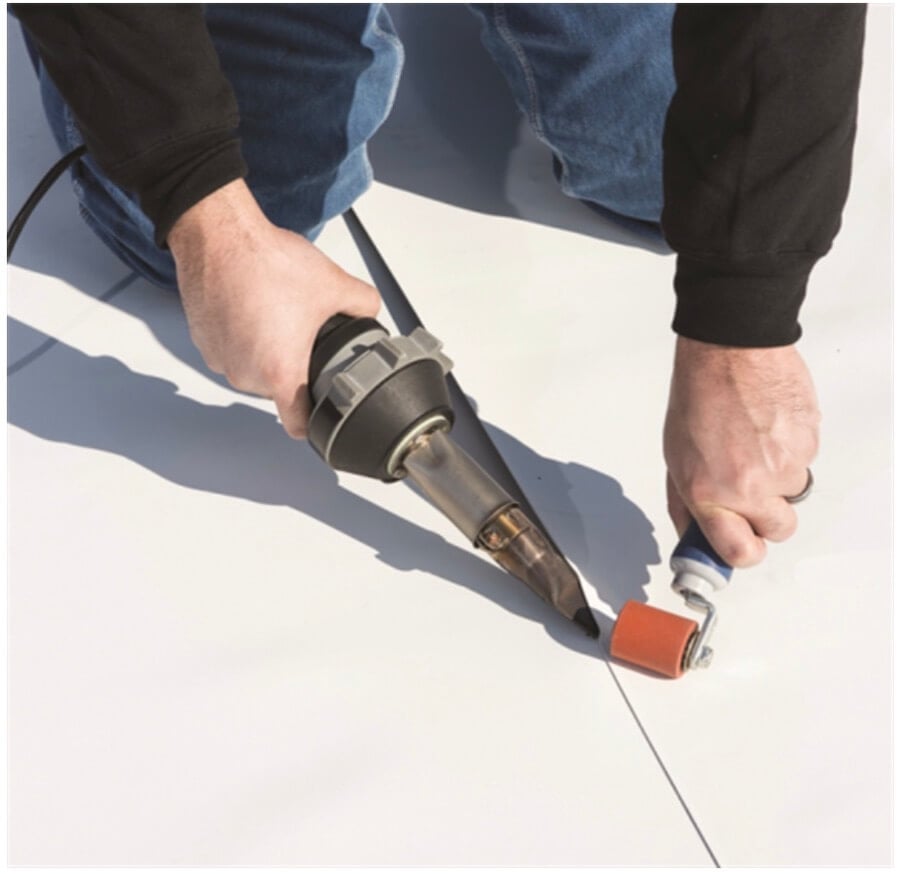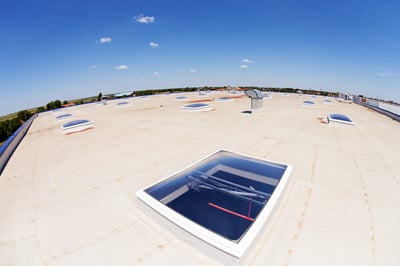Fully Adhered vs. Mechanically Attached TPO Roofs: Which is Best for Your Building?
June , 2024 | 7 min. read
By Kevin Mills

Choosing the right roofing material for your commercial building is a significant decision that impacts the longevity, energy efficiency, and performance of your business. Thermoplastic Polyolefin (TPO) roofing has gained popularity over the years for its durability and energy-saving properties! There's a lot to learn in the realm of TPO, including two primary installation methods: fully adhered and mechanically attached.
We're glad you landed here because RoofCrafters has been a name in the industry for nearly thirty years. We know that life is full of choices, even when it comes to roofing. It's wonderful to have a guide giving all the details about what you need to know on a particular topic, and we're ready to tell you all about TPO installation methods!
In this article, we'll delve into the specifics of both methods, exploring their advantages and disadvantages, to help you make an informed choice tailored to your commercial roofing needs. By the time you finish reading, you'll be a TPO roofing expert, which will bring you even closer to your brand-new roof! Let's begin!
Fully Adhered TPO Roofing: Pros and Cons
Fully adhered TPO roofing involves securing the TPO membrane directly to the substrate using adhesives. This installation method creates a strong bond between the membrane and the roof deck.

Here's a closer look at the pros and cons:
Pros:
- Watertight Seal: The adhesive bond forms a continuous, watertight seal, reducing the risk of leaks and water infiltration. This is particularly beneficial in areas prone to heavy rainfall or inclement weather.
- Wind Uplift Resistance: The adhesion of the TPO membrane provides exceptional wind uplift resistance, making fully-adhered TPO roofing suitable for buildings located in windy regions.

- Aesthetics: Fully-adhered TPO roofing offers a clean and sleek appearance, as there are no exposed fasteners or attachments visible on the surface.
- Noise Reduction: The adhesive layer can help dampen external noises, making it a favorable option for buildings in noisy environments.
Cons:
- Labor Intensive: Fully-adhered TPO roofing requires meticulous surface preparation and adhesive application, making it more labor-intensive and time-consuming than other methods.
- Cost: The additional labor and materials required for fully adhered installation can lead to higher upfront costs compared to other methods.
Mechanically Attached TPO Roofing: Pros and Cons
Mechanically attached TPO roofing involves fastening the membrane to the roof deck using mechanical fasteners, such as screws and plates. Whereas, fully adhered uses a bonding adhesive or "glue."

Let's explore the pros and cons of this method:
Pros:
- Cost-Effective: Mechanically attached TPO roofing is generally more cost-effective due to reduced labor and installation time compared to fully adhering methods.
- Installation Speed: The use of mechanical fasteners speeds up the installation process, making it a suitable choice for projects with tight timelines.

- Ease of Repairs: In the event of damage, mechanically attached TPO membranes are relatively easier to replace and repair since the fasteners can be easily removed.
- Ventilation: Mechanically attached TPO roofing can allow for better ventilation between the membrane and the substrate, reducing the risk of moisture accumulation.
Cons:
- Punctures: The fasteners penetrate the TPO membrane, creating potential entry points for moisture. This can increase the risk of leaks if not properly sealed.
- Wind Uplift: While mechanically attached TPO roofing still provides wind uplift resistance, it may not be as effective as fully adhered methods in areas with high wind exposure.
- Aesthetics: Mechanical fasteners can create visible penetrations on the roof surface, which may not be as aesthetically pleasing as fully adhered installations.
Choosing Mechanically Attached or Fully Adhered
Choosing between fully adhered and mechanically attached TPO roofing methods depends on several factors, including your budget, building location, climate, and aesthetic preferences.
Fully adhered TPO roofing offers a watertight seal, exceptional wind uplift resistance, and a clean appearance, but it comes with higher labor and material costs.
On the other hand, mechanically attached TPO roofing is cost-effective, quicker to install, and easier to repair, but it may present more visible penetrations and potentially compromised watertightness.

To make an informed decision, consult with a professional roofing contractor who can assess your building's unique requirements and recommend the most suitable installation method for your TPO roofing project!
Ultimately, the right choice will contribute to a durable, energy-efficient, and aesthetically pleasing roofing solution that stands the test of time. Everyone needs a little stability in their life, so ensure your roof provides it by doing a lot of research!
Factors to Consider When Choosing TPO Roofing Installation Method
Choosing the right TPO roofing method is crucial. It ensures the long life and performance of your roof. It can mean the difference in getting the maximum value from your investment.
Here are some key factors to consider:
1. Budget: Fully adhered TPO roofing tends to have higher upfront costs due to labor and materials, while mechanically attached TPO roofing is generally more cost-effective.
2. Building Location: In areas prone to high winds, a fully adhered system may offer better wind uplift resistance. But, in regions with mild weather, a screwed system could be enough and cheaper.
3. Building Use: Consider the use of the building. For example, quiet buildings may benefit from fully adhered TPO roofing. It reduces noise.
4. Installation Time: Tight on time? Mechanically attached TPO roofing is a faster install option. This cuts downtime and labor costs.
5. Aesthetic Preferences: Fully adhered systems look clean. They also look seamless. They lack visible fasteners, which might matter for some commercial applications.
6. Maintenance and Repair: These systems are easier to repair and replace. So, they are a good choice for buildings where easy access and minimal disruption matter.
By evaluating these key factors and asking a roofer, you can find the best TPO method for your needs.
Is TPO Roofing Right for Your Building?
So, what did we learn?
The choice between self-adhered and mechanically installed TPO roofing hinges on a range of factors, including budget, installation speed, climate considerations, and building aesthetics. Each method presents its own set of advantages and considerations, all of which should be carefully weighed to align with your project's specific needs.
Whether you opt for the convenience and waterproofing properties of self-adhered TPO roofing or the efficiency and cost-effectiveness of the mechanically installed approach, partnering with a seasoned roofing professional is the key to a successful installation. Their expertise will ensure that your TPO roofing system not only provides lasting protection but also complements the overall functionality and appearance of your commercial space.
Ready to chat with an expert?
At RoofCrafters, we take pride in offering anyone who chooses us with optimal service and a caring set of hands. If you want to speak with one of our responsive representatives, make your way over to our contact page.
We're more than thrilled to assist you. And while you're at it, feel free to check out our comprehensive roofer checklist to help you decide how to find an excellent roofer for your project.
My name is Kevin Mills, and I am the lead estimator for RoofCrafters’ Tampa division. I’m originally from Michigan, and I enjoy hunting, fishing, and spending any free time outdoors. What I’m most passionate about, though, is helping business owners and homeowners alike achieve their roofing goals, all while providing a seamless customer journey.





